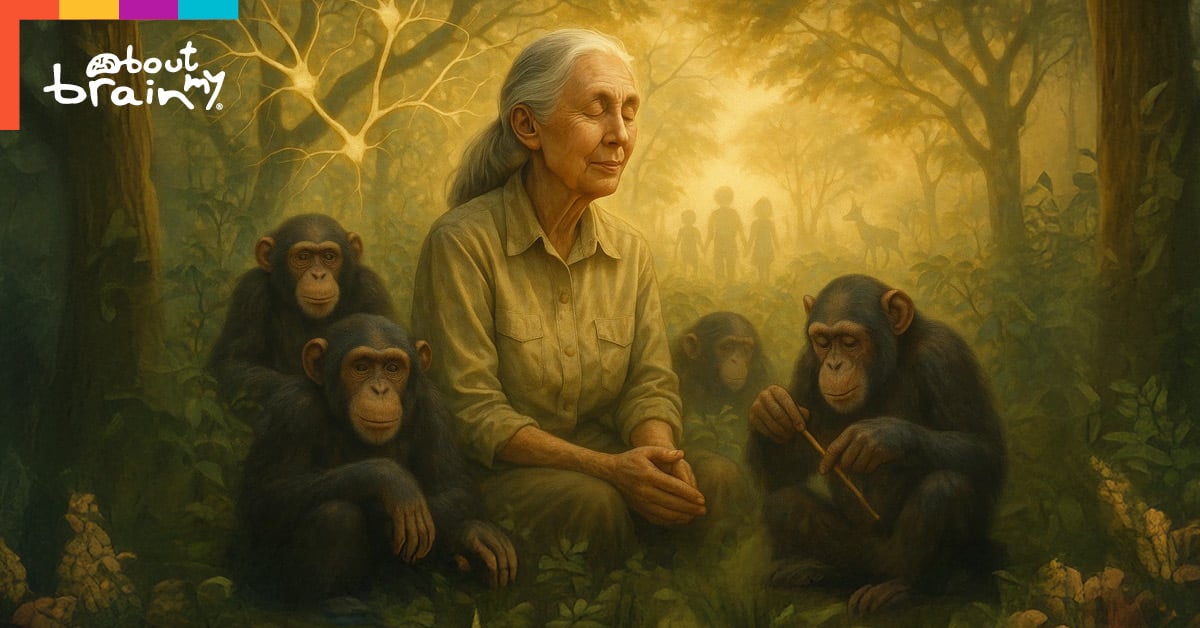
Coyote
Humour, Adaptability and Learning From Mistakes.

- Cards
- Spirit Animals Oracle Deck
- Coyote
Discovering The Coyote Spirit
In the vast landscapes of the wilderness, the coyote emerges as a symbol of profound significance, embodying essential qualities of humor, cunning, and adaptability. At the core of the coyote's symbolism lies the essence of humor. In its playful antics and clever tricks, the coyote exemplifies the art of finding levity in even the most challenging situations. The spiritual medicine of the coyote encourages us to cultivate a lighthearted perspective, to infuse joy into our lives, and to use humor as a tool to navigate through life's trials with resilience and optimism.
Beyond humor, the coyote epitomizes cunning. In its ability to outwit predators and adapt to various environments, the coyote serves as a reminder of the power of resourcefulness and cleverness. By embracing the coyote's spirit of cunning, we can navigate through complexities with grace, turn adversity into opportunities, and accomplish our goals with finesse and ingenuity.
In its ability to thrive in different landscapes and climates, the coyote becomes a guide to embracing change and remaining flexible in the face of uncertainty. The spiritual medicine of the coyote inspires us to let go of rigidity, to welcome life's fluctuations with open arms, and to flow with the currents of transformation.
In addition to humor, cunning, and adaptability, the coyote's medicine involves learning from mistakes. In its adventurous nature and encounters with challenges, the coyote becomes a teacher of resilience and self-awareness. The spiritual energy of the coyote urges us to view mistakes as valuable lessons, to embrace failures as stepping stones to growth, and to approach life with a growth mindset.
Prefer to listen to this article?
Check out our podcast!
Newsletter
Keep reading ↓
- Spirit Animals ↓
- See All
- Alligator
- Anaconda
- Ant
- Arabian Oryx
- Beaver
- Bee
- Beetle
- Black Bear
- Buffalo
- Butterfly
- Camel
- Cat
- Cheetah
- Chimpanzee
- Condor
- Coyote
- Crab
- Dog
- Dolphin
- Dove
- Dragonfly
- Elephant
- Elk
- Emu
- Falcon
- Flamingo
- Fox
- Frog
- Gazelle
- Giraffe
- Goose
- Gorilla
- Grasshopper
- Hawk
- Hedgehog
- Hippopotamus
- Horse
- Hummingbird
- Hyena
- Jaguar
- Kangaroo
- Kiwi
- Koala
- Koi Fish
- Komodo Dragon
- Kookaburra
- Ladybug
- Lamb
- Lemur
- Lion
- Lizard
- Llama
- Manatee
- Mandarin Duck
- Meerkat
- Monkey
- Moose
- Mountain Goat
- Mouse
- Nightingale
- Octopus
- Orca Whale
- Otter
- Owl
- Ox
- Panda
- Panther
- Parrot
- Peacock
- Polar Bear
- Quetzal
- Rabbit
- Raccoon
- Raven
- Rhinoceros
- Rooster
- Salmon
- Sea Turtle
- Seahorse
- Shark
- Sloth
- Snake
- Snow Leopard
- Spider
- Squirrel
- Starfish
- Swan
- Tiger
- Tortoise
- Whale
- Wolf
- Wombat
- Zebra
What Does The Coyote Represent?
The coyote possesses a fascinating array of qualities that make it a remarkable and adaptable creature in the natural world. Known for its cunning and intelligence, the coyote is a resourceful and opportunistic hunter, able to adapt to a variety of environments and situations. Its keen sense of awareness and ability to navigate both wilderness and urban landscapes demonstrate its exceptional survival skills. The coyote's playful and social nature also allows it to form strong family bonds and thrive in communities. Furthermore, the coyote's resourcefulness and ability to find food sources contribute to the ecological balance of its habitat. As a symbol of trickster energy in Native American mythology, the coyote represents a balance between wisdom and foolishness, teaching us to embrace change and unpredictability in life. Overall, the coyote's qualities of adaptability, intelligence, and resilience make it an intriguing and essential part of the natural world.
Keep reading ↓
Supporting content
Cultural and Mythological Significance Of The Coyote Spirit
The coyote holds significant cultural and mythological significance in various Native American tribes and other indigenous cultures across North and Central America. Revered as a symbol of cunning, intelligence, and adaptability, the coyote often embodies the dual nature of life, representing both positive and negative qualities. In many Native American myths, the coyote is depicted as a trickster figure, responsible for bringing both chaos and wisdom to the world. As a trickster, the coyote challenges social norms, exposes human folly, and imparts valuable life lessons through its mischievous actions.
In some traditions, the coyote is seen as a teacher and protector, offering guidance to those who seek wisdom and understanding. It is often associated with storytelling, as tales of the coyote are used to pass down cultural knowledge from one generation to another.
Moreover, the coyote's howling is deeply woven into the cultural fabric of many Native American communities, believed to have spiritual and mystical qualities. It is sometimes seen as a messenger between the human world and the spirit realm.
Additionally, the coyote plays a vital role in the mythology of creation, with stories portraying it as a creator or shapeshifter involved in the birth of the world and its creatures.
Overall, the cultural and mythological significance of the coyote showcases its complex and multifaceted nature, portraying it as a symbol of both mischief and wisdom, and reflecting the deep reverence and respect that many indigenous cultures hold for this fascinating animal.
Keep reading ↓
A Coyote In My Deams
The appearance of a coyote in a dream can carry various symbolic meanings and messages. In many indigenous cultures, the coyote is seen as a trickster figure, representing cunning, adaptability, and resourcefulness. In dreams, the coyote may serve as a reminder to embrace these qualities and be more flexible and open-minded in dealing with life's challenges. The coyote's ability to thrive in diverse environments can symbolize the need to adapt and find creative solutions to obstacles.
Additionally, the coyote may represent the shadow self or hidden aspects of one's personality, urging the dreamer to explore and integrate these suppressed emotions or traits. As a wild and free-spirited creature, the coyote in a dream might also signify the need to reconnect with one's instinctual nature or seek more freedom and independence in waking life. Overall, the meaning of a coyote in a dream can be deeply personal and may require introspection and reflection to fully understand its significance.
Keep reading ↓
Habitat, Behaviours and Ecological Importance Of The Coyote
Habitat:
The coyote is a highly adaptable species, found across a wide range of habitats throughout North and Central America. These habitats include deserts, grasslands, forests, mountains, and even urban areas. Coyotes are incredibly resourceful and can thrive in various environments due to their diverse diet, which includes small mammals, birds, insects, fruits, and vegetation. They are especially skilled at adapting to human-altered landscapes, making use of farmlands, suburban areas, and even city outskirts to find food and shelter. Their ability to live in such diverse habitats is a testament to their remarkable adaptability and survival skills, making them one of the most successful and widespread carnivores on the continent.
Behaviours:
- Hunting Techniques: Coyotes are skilled hunters and use various strategies to catch their prey. They often hunt in pairs or small groups, using teamwork to surround and outmaneuver their target. They are known for their intelligence, agility, and ability to adapt their hunting techniques to different environments.
- Vocal Communication: Coyotes are highly vocal animals and use a wide range of vocalizations to communicate with each other. Their distinctive howls, yips, barks, and growls play a crucial role in establishing territories, locating pack members, and signaling danger.
- Social Structure: Coyotes are generally solitary animals, but they can form packs in some regions. Pack dynamics vary, but they usually consist of a dominant breeding pair and their offspring. Within packs, they exhibit cooperative behaviors, such as sharing food and raising the young together.
- Nocturnal Activity: Coyotes are primarily nocturnal, meaning they are most active during the night. This behavior helps them avoid human encounters and take advantage of the cooler temperatures, making it easier to hunt and move around undetected.
- Adaptability: One of the most remarkable behaviors of the coyote is its adaptability. They are highly flexible in their diet, which allows them to thrive in various environments. They can eat small mammals, birds, reptiles, insects, fruits, and even human-provided food. Their adaptability is a key factor in their successful coexistence with humans across urban, suburban, and rural landscapes.
Ecological Importance:
The ecological importance of the coyote lies in its role as a keystone species, exerting significant influence on the balance and health of ecosystems. As an apex predator, coyotes help regulate populations of their prey, such as rodents and small mammals, preventing overgrazing and ensuring a stable food web. By controlling herbivore populations, they indirectly impact plant communities, promoting biodiversity in their habitats. Additionally, the scavenging behavior of coyotes plays a crucial role in the nutrient cycling process, as they consume carrion and return essential nutrients to the soil. Their presence can also benefit other wildlife, as they create habitat for various species by digging burrows and dens, which are later used by smaller animals for shelter.
Keep reading ↓
How the Coyote Contributes To Scientific Research
The coyote, a resilient and adaptive carnivore native to North America, has emerged as an essential subject for scientific inquiry in the realms of ecology, behavior, and evolution.Their ability to thrive in varied habitats, from deserts to urban landscapes, makes them a model organism for studying wildlife adaptation in changing environments, especially in the face of human expansion. Behavioral studies on coyotes have revealed complex social structures and communication methods, enriching our understanding of canid sociality. Additionally, as coyotes interbreed with wolves and dogs in certain regions, they present a unique opportunity to study hybridization and its evolutionary implications.
Keep reading ↓
Guided Visualization To Connect With The Coyote Spirit
Complement your ritual with...
Binaural beats!
- Find a quiet and comfortable space where you can sit or lie down. Close your eyes and take a few deep breaths to relax your body and mind. Imagine yourself standing in a vast, open desert landscape with the warm sun shining above you. As you take in the surroundings, you notice a coyote approaching in the distance.
- As the coyote comes closer, you can feel its energy and presence. It looks at you with keen, intelligent eyes, and you sense a deep connection between you and this wise creature. You can feel its wildness and untamed spirit, and a sense of curiosity fills the air.
- The coyote beckons you to follow it, and you begin to walk side by side, deep into the desert. As you walk, you become more aware of your own instincts and intuition, tuning into the wisdom of nature that resides within you.
- The coyote leads you to a secluded spot, and you sit together in silence. In this moment of stillness, you feel a sense of unity with the coyote and with the natural world around you.
- Take a moment to ask the coyote any questions you may have or seek guidance on a specific aspect of your life. Listen for any insights or messages that come to you, trusting in the wisdom of the coyote to guide you.
- After spending some time with the coyote, you express gratitude for its presence and the guidance it has offered. You bid farewell to the coyote, knowing that its spirit will always be with you.
- As you open your eyes, take a moment to reflect on the experience and any insights you may have gained. Know that you can always return to this guided visualization to reconnect with the spirit of the coyote whenever you feel the need for guidance, wisdom, or a deeper connection to nature.
Shop
Connect with the essence of our Spirit Animals!

Beach Towel
Buy Now

Sherpa blanket
Buy Now

Flag Wall Art
Buy Now

Oracle Decks
Buy Now
From Our Blog
Stay up to date with our latest articles!

Jane Goodall’s Legacy: Lessons On Leadership And Compassion

Empowering Leaders Through Personal Growth with Gail Eaton-Briggs

From Digital Lovers To Grandmothers-For-Hire: What Japan Teaches Us About Loneliness
Please note:
It is crucial to acknowledge that the symbology and interpretations can differ greatly among various cultures, religious ideologies, and individual viewpoints. The significance and comprehension of these spirit animals may vary depending on the particular mythological backdrop or the spiritual and philosophical framework through which they are approached. The descriptions of these Oracle Cards are based on information gathered from various sources. Our aim is to provide an overview and a fictional interpretation and we cannot guarantee the accuracy or completeness of this information. The artwork featured on these Oracle Cards have been crafted by digital artists and designers, Relmi Damiano and Sacha Damiano, in conjunction with Artificial Intelligence that has been enhanced by human intervention. The visual imagery serves as a fictional representation of some of the symbols associated with these goddesses throughout history.

